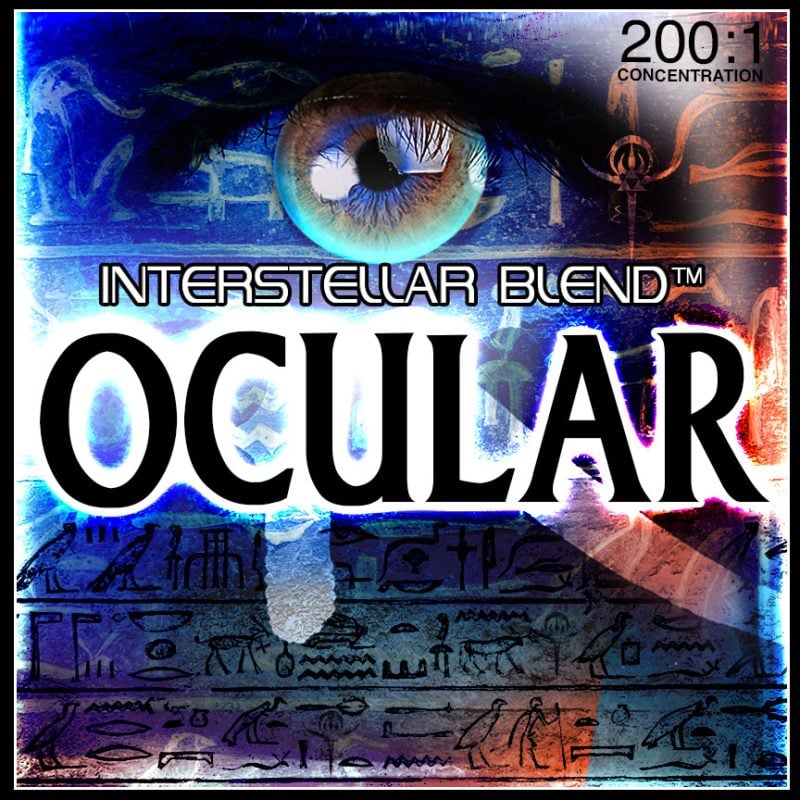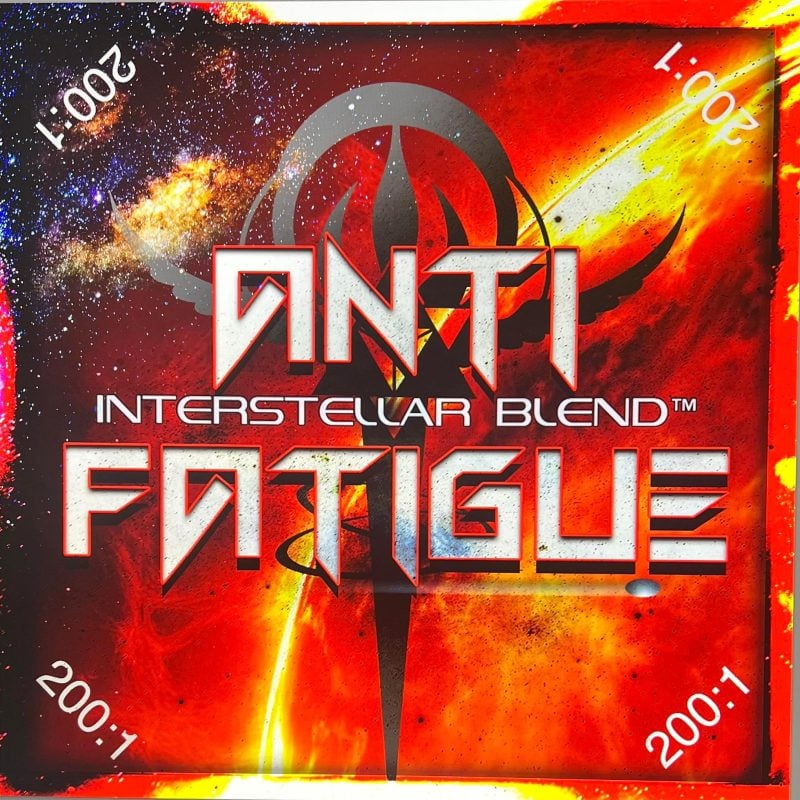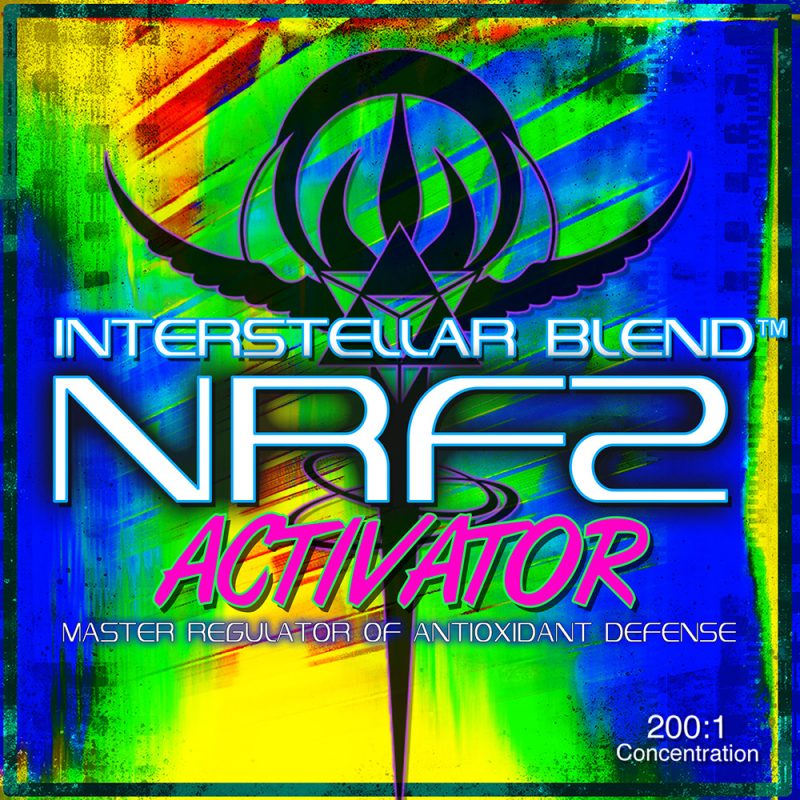
SECRET BLENDS (25G SAMPLES)
June 25, 2024
4 SAMPLE COMBO (SAVE $175) Select 5th free in cart.
January 5, 2025DHA – Omega Guardian (Ultra Potent Algae Based)
$195.00 – $495.00Price range: $195.00 through $495.00
INTRODUCING
INTERSTELLAR BLEND™
DHA
OMEGA GUARDIAN
docosahexaenoic aciD
ULTRA POTENT ALGAE BASED
200:1 Concentration
SCIENTIFIC STUDIES
Nonalcoholic fatty liver disease (NAFLD) is a major public health concern in western societies. Nonalcoholic steatohepatitis (NASH), the progressive form of NAFLD, is characterized by hepatic steatosis, inflammation, oxidative stress and fibrosis. NASH is a risk factor for cirrhosis and hepatocellular carcinoma. NASH is predicted to be the leading cause of liver transplants by 2020. Despite this growing public health concern, there remain no Food and Drug Administration (FDA) approved NASH treatments. Using Ldlr -/- mice as a preclinical model of western diet (WD)-induced NASH, we previously established that dietary supplementation with docosahexaenoic acid (DHA, 22:6,ω3) attenuated WD-induced NASH in a prevention study. Herein, we evaluated the capacity of DHA supplementation of the WD and a low fat diet to fully reverse NASH in mice with pre-existing disease.
Brown adipose tissue (BAT) activation is a possible therapeutic strategy to increase energy expenditure and improve metabolic homeostasis in obesity. Recent studies have revealed novel interactions between BAT and circulating lipid species—in particular, the non-esterified fatty acid (NEFA) and oxylipin lipid classes. This study aimed to identify individual lipid species that may be associated with cold-stimulated BAT activity in humans. A panel of 44 NEFA and 41 oxylipin species were measured using mass-spectrometry-based lipidomics in the plasma of fourteen healthy male participants before and after 90 min of mild cold exposure. Lipid measures were correlated with BAT activity measured via 18F-fluorodeoxyglucose ([18F]FDG) positron emission tomography/computed tomography (PET/CT), along with norepinephrine (NE) concentration (a surrogate marker of sympathetic activity). The study identified a significant increase in total NEFA concentration following cold exposure that was positively associated with NE concentration change. Individually, 33 NEFA and 11 oxylipin species increased significantly in response to cold exposure. The concentration of the omega-3 NEFA, docosahexaenoic acid (DHA) and eicosapentaenoic acid (EPA) at baseline was significantly associated with BAT activity, and the cold-induced change in 18 NEFA species was significantly associated with BAT activity. No significant associations were identified between BAT activity and oxylipins.
This study was designed to examine the effects of DHA on plasma lipid and lipoprotein concentrations and other biomarkers of cardiovascular risk in the absence of weight loss. In this randomized, controlled,double-blind trial, 36 overweight or obese adults were treated with 2 g/d of algal DHA or placebo for 4.5 mo. Markers of cardiovascular risk were assessed before and after treatment. In the DHA-supplemented group, the decrease in mean VLDL particle size (P ≤ 0.001) and increases in mean LDL (P ≤ 0.001) and HDL (P # 0.001) particle sizes were significantly greater than changes in the placebo group. DHA supplementation also increased the concentrations of large LDL (P #0.001) and large HDL particles (P = 0.001) and decreased the concentrations of small LDL (P = 0.009) and medium HDL particles (P = 0.001). As calculated using NMR-derived data, DHA supplementation reduced VLDL TG (P = 0.009) and total TG concentrations (P = 0.006). Plasma IL-10 increased with DHA supplementation to a greater extent than placebo (P =0.021), but no other significant changes were observed in glucose metabolism, insulin sensitivity, blood pressure, or markers of inflammation with DHA. In summary, DHA supplementation resulted in potentially beneficial changes in some markers of cardiometabolic risk, whereas other markers were unchanged.
HFD induced insulin resistance, liver steatosis with n−3 FA depletion, and loss of mitochondrial respiratory functions with diminished NAD+/NADH ratio and ATP levels compared with CD, with the parallel decrease in the expression of the components of the PGC-1α cascade, namely, PPAR-α, FGF21 and AMPK, effects that were not observed in mice subjected to DHA and HT co-administration.
Data presented indicate that the combination of DHA and HT prevents the development of liver steatosis and the associated mitochondrial dysfunction induced by HFD, thus strengthening the significance of this protocol as a therapeutic strategy avoiding disease evolution into more irreversible forms characterised by the absence of adequate pharmacological therapy in human obesity.
Obesity represents a major under-recognized preventable risk factor for cancer development and recurrence, including breast cancer (BC). Healthy diet and correct lifestyle play crucial role for the treatment of obesity and for the prevention of BC. Obesity is significantly prevalent in western countries and it contributes to almost 50% of BC in older women. Mechanisms underlying obesity, such as inflammation and insulin resistance, are also involved in BC development. Fatty acids are among the most extensively studied dietary factors, whose changes appear to be closely related with BC risk. Alterations of specific ω-3 polyunsaturated fatty acids (PUFAs), particularly low basal docosahexaenoic acid (DHA) levels, appear to be important in increasing cancer risk and its relapse, influencing its progression and prognosis and affecting the response to treatments. On the other hand, DHA supplementation increases the response to anticancer therapies and reduces the undesired side effects of anticancer therapies. Experimental and clinical evidence shows that higher fish consumption or intake of DHA reduces BC cell growth and its relapse risk. Controversy exists on the potential anticancer effects of marine ω-3 PUFAs and especially DHA, and larger clinical trials appear mandatory to clarify these aspects. The present review article is aimed at exploring the capacity of DHA in controlling obesity-related inflammation and in reducing insulin resistance in BC development, progression, and response to therapies.
Plasma EPA and DHA of 1719 adults in the National Health and Nutrition Examination Survey (2003–2004) are determined by gas chromatography mass spectrometry, while total body fat is measured by dual-energy X-ray absorptiometry. DIO mice are fed a high-fat diet supplemented with EPA or DHA(1% wt/wt) for 15 weeks and 3T3-L1 preadipocytes are treated with EPA or DHA during differentiation. Plasma DHA but not EPA is associated with lower body fat mass (ptrend < 0.0001), which persists in overweight/obese subjects (ptrend = 0.02). DHA supplementation reduces inguinal WAT and exhibits a more pronounced thermogenic effect than EPA in DIO mice. In vitro, the browning process is induced after 2-day and 6-day treatment with DHA and EPA, respectively.
Plasma DHA but not EPA is inversely associated with body fat mass. The more potent anti-adipogenic effect of DHA than EPA may involve a better capability of inducing browning of WAT for DHA.
The essential fatty acid alpha-linolenic acid (ALA) is present in high amounts in oils such as flaxseed, soy, hemp, rapeseed, chia, and perilla, while stearidonic acid is abundant in echium oil. ALA is metabolized to eicosapentaenoic acid (EPA) and docosahexaenoic acid (DHA) by desaturases and elongases in humans. The conversion of ALA to EPA and DHA is limited, and these long-chain n−3 polyunsaturated fatty acids (PUFAs) are mainly provided from dietary sources (fish and seafood). This review provides an overview of studies that explored the effects of dietary supplementation with ALA in obesity and related diseases. The obesity-associated changes of desaturase and elongase activities are summarized, as they could influence the metabolic conversion of ALA. Generally, supplementation with ALA or ALA-rich oils leads to an increase in EPA levels and has no effect on DHA or omega-3 index. According to the literature data, stearidonic acid could enhance conversion of ALA to long-chain n−3 PUFA in obesity. Recent studies confirm that EPA and DHA intake should be considered as a primary dietary treatment strategy for improving the omega-3 index in obesity and related diseases.
Obesity has become a prevailing epidemic throughout the globe. Effective therapies for obesity become attracting. Food components with beneficial effects on “weight loss” have caught increasing attentions. Conjugated linoleic acid (CLA), docosahexaenoic acid (DHA), and eicosapentaenoic acid (EPA) belong to different families of polyunsaturated fatty acids (PUFA). However, they have similar effects on alleviating obesity and/or preventing from obesity. They influence the balance between energy intake and expenditure; and reduce body weight and/or fat deposition in animal models, but show little effect in healthy human subjects. They inhibit key enzymes responsible for lipid synthesis, such as fatty acid synthase and stearoyl-CoA desaturase-1, enhance lipid oxidation and thermogenesis, and prevent free fatty acids from entering adipocytes for lipogenesis. PUFA also exert suppressive effects on several key factors involved in adipocyte differentiation and fat storage. Despite their similar effects and shared mechanisms, they display differences in the regulation of lipid metabolism. Moreover, DHA and EPA exhibit “anti-obesity” effect as well as improving insulin sensitivity, while CLA induces insulin resistance and fatty liver in most cases. A deeper and more detailed investigation into the complex network of anti-obesity regulatory pathways by different PUFA will improve our understanding of the mechanisms of body weight control and reduce the prevalence of obesity.
Docosahexaenoic Acid and the Aging Brain – ScienceDirect
The dietary essential PUFA docosahexaenoic acid [DHA; 22:6(n-3)] is a critical contributor to cell structure and function in the nervous system, and deficits in DHA abundance are associated with cognitive decline during aging and in neurodegenerative disease. Recent studies underscore the importance of DHA-derived neuroprotectin D1 (NPD1) in the homeostatic regulation of brain cell survival and repair involving neurotrophic, antiapoptotic and antiinflammatory signaling. Emerging evidence suggests that NPD1 synthesis is activated by growth factors and neurotrophins. Evolving research indicates that NPD1 has important determinant and regulatory interactions with the molecular-genetic mechanisms affecting β-amyloid precursor protein (βAPP) and amyloid beta (A β) peptide neurobiology. Deficits in DHA or its peroxidation appear to contribute to inflammatory signaling, apoptosis, and neuronal dysfunction in Alzheimer disease (AD), a common and progressive age-related neurological disorder unique to structures and processes of the human brain. This article briefly reviews our current understanding of the interactions of DHA and NPD1 on βAPP processing and A β peptide signaling and how this contributes to oxidative and pathogenic processes characteristic of aging and AD pathology.
Humans evolved a uniquely large brain among terrestrial mammals. Brain and nervous tissue is rich in the omega-3 polyunsaturated fatty acid (PUFA) docosahexaenoic acid (DHA). docosahexaenoic acid is required for lower and high order functions in humans because of understood and emerging molecular mechanisms. Among brain components that depend on dietary components, DHA is limiting because its synthesis from terrestrial plant food precursors is low but its utilization when consumed in diet is very efficient. Negligible DHA is found in terrestrial plants, but in contrast, DHA is plentiful at the shoreline where it is made by single-celled organisms and plants, and in the seas supports development of very large marine mammal brains. Modern human brains accumulate DHA up to age 18, most aggressively from about half-way through gestation to about two years of age. Studies in modern humans and non-human primates show that modern infants consuming infant formulas that include only DHA precursors have lower DHA levels than for those with a source of preformed DHA. Functional measures show that infants consuming preformed DHA have improved visual and cognitive function. Dietary preformed DHA in the breast milk of modern mothers supports many-fold greater breast milk DHA than is found in the breast milk of vegans, a phenomenon linked to consumption of shore-based foods. Most current evidence suggests that the DHA-rich human brain required an ample and sustained source of dietary DHA to reach its full potential.
Docosahexaenoic Acid (DHA): An Ancient Nutrient for the Modern Human Brain
Modern humans have evolved with a staple source of preformed docosahexaenoic acid (DHA) in the diet. An important turning point in human evolution was the discovery of high-quality, easily digested nutrients from coastal seafood and inland freshwater sources. Multi-generational exploitation of seafood by shore-based dwellers coincided with the rapid expansion of grey matter in the cerebral cortex, which characterizes the modern human brain. The DHA molecule has unique structural properties that appear to provide optimal conditions for a wide range of cell membrane functions. This has particular implications for grey matter, which is membrane-rich tissue. An important metabolic role for DHA has recently been identified as the precursor for resolvins and protectins. The rudimentary source of DHA is marine algae; therefore it is found concentrated in fish and marine oils. Unlike the photosynthetic cells in algae and higher plants, mammalian cells lack the specific enzymes required for the de novo synthesis of alpha-linolenic acid (ALA), the precursor for all omega-3 fatty acid syntheses. Endogenous synthesis of DHA from ALA in humans is much lower and more limited than previously assumed. The excessive consumption of omega-6 fatty acids in the modern Western diet further displaces DHA from membrane phospholipids. An emerging body of research is exploring a unique role for DHA in neurodevelopment and the prevention of neuropsychiatric and neurodegenerative disorders. DHA is increasingly being added back into the food supply as fish oil or algal oil supplementation.
Docosahexaenoic Acid in Human Health
Docosahexaenoic acid (DHA, 22:6n-3) is now recognized as a physiologically-essential nutrient in the brain and retina for neuronal functioning and visual acuity, respectively. DHA is present in aquatic organisms (including fish/fish oils, aquatic mammals, algae, etc.) but is absent from common plant sources and edible vegetable oils. The limited metabolic convertibility of dietary alpha-linolenic acid (LNA, 18:3n-3) to DHA via desaturation plus elongation reactions in the liver and other tissues has led to consideration of preformed dietary DHA as an important nutrient in order to ensure optimal levels for maximal biological performance including protective effects on various chronic disorders. Epidemiological and intervention studies have indicated the potential for dietary DHA to protect against cardiovascular disease (morbidity and mortality) as well as favorably attenuating associated risk factors including plasma triglyceride-lowering. Evidence supporting the anti-arrhythmic potential of DHA based on experimental studies has led to considerations that the apparent cardioprotective effects of fish/fish oil consumption may be due in part to the enrichment of cardiac tissue in DHA subsequent to its dietary consumption. Vegan vegetarians are at particular risk with respect to having depressed physiological levels of DHA as well as sub-optimal concentrations of DHA in breast milk of lactating women. Depressed levels of DHA have become apparent from various measurements on patients with various neurological/behavioral disorders although controlled intervention trials with preformed DHA (lacking EPA) have been very limited in number to date. Controlled intervention studies with supplemental DHA have indicated benefit in hyperaggressive behavior as induced via mental stress in university students. Controlled clinical trials using supplemental DHA (free of EPA) are required and many are now currently underway to directly assess the potential of DHA itself as distinguished from fish/fish oils containing DHA plus EPA in various studies related to human health indices and the attenuation of chronic disorders and associated risk factors. The employment of nutraceutical preparations of DHA and their inclusion in a wide assortment of functional foods are expected to dramatically increase in numbers and availability in the marketplace within the coming decade in view of mounting evidence for the health benefits associated with increased consumption of dietary DHA in various forms.
Health Benefits of n-3 Polyunsaturated Fatty Acids: Eicosapentaenoic Acid and Docosahexaenoic Acid
Recent studies also indicate anti-inflammatory and insulin-sensitizing effects of these fatty acids in metabolic disorders. Classically, n-3 PUFAs mediate some of these effects by antagonizing n-6 PUFA (arachidonic acid)-induced proinflammatory prostaglandin E2 (PGE2) formation. Another well-known mechanism by which n-3 PUFAs impart their anti-inflammatory effects is via reduction of nuclear factor-κB activation. This transcription factor is a potent inducer of proinflammatory cytokine production, including interleukin 6 and tumor necrosis factor-α, both of which are decreased by EPA and DHA. Other evidence also demonstrates that n-3 PUFAs repress lipogenesis and increase resolvins and protectin generation, ultimately leading to reduced inflammation. Finally, beneficial effects of EPA and DHA in insulin resistance include their ability to increase secretion of adiponectin, an anti-inflammatory adipokine. In summary, n-3 PUFAs have multiple health benefits mediated at least in part by their anti-inflammatory actions; thus their consumption, especially from dietary sources, should be encouraged.
Docosahexaenoic acid (DHA) is the predominant omega-3 long-chain polyunsaturated fatty acid found in human brain and eyes. There are a number of studies in the literature showing the health benefits of DHA. It is critical throughout all life stages from the need for fetal development, the prevention of preterm birth, and the prevention of cardiovascular disease to the improvements in the cognitive function and the eye health of adults and elderly. These benefits might be related to the modulation of gut microbiota by DHA. In addition, there are some discrepancies in the literature regarding certain health benefits of DHA, and this review is intended to explore and understand these discrepancies. Besides the variations in the DHA contents of different supplement sources, bioavailability is crucial for the efficacy of DHA supplements, which depends on several factors. For example, DHA in phospholipid and triglyceride forms are more readily to be absorbed by the body than that in ethyl ester form. In addition, dietary lipids in meals and emulsification of DHA oil can increase the bioavailability of DHA. Estrogens stimulated the biosynthesis of DHA, whereas testosterone stimulus induced a decrease in DHA. The roles of DHA through human lifespan, the sources, and its recommended daily intake in different countries are also discussed to provide a better understanding of the importance of this review.
The highly purified preparations used in the present study clearly distinguished between the effects of EPA and DHA, the 2 major ω3 fatty acids in fish and most fish oil preparations. The novel finding is that relative to placebo, DHA, but not EPA, improves vasodilator responses to endogenous and exogenous NO donors and attenuates vasoconstrictor response to norepinephrine in the forearm microcirculation of overweight subjects with hyperlipidemia. Mechanisms appear to be predominantly endothelium independent, based on enhanced vasodilatory responses after the coinfusion of acetylcholine with L-NMMA and the infusion of nitroprusside, both of which are endothelium independent. Our results, however, do not preclude some endothelial component in the dilatory responses associated with DHA. These findings may account for the lower BP observed after DHA supplementation.19 The favorable effects seen with DHA were paralleled by changes in plasma lipid and lipoprotein levels.
Contributing to myocardial infarction are metabolic syndrome’s features of dyslipidemia (including elevated total cholesterol and LDL-c), oxidation, inflammation, hypertension, glucose intolerance, overweight and obesity. Inflammation, glucose and lipid levels are variously influenced by disturbances in various adipocytokines which are in turn positively impacted by n-3 polyunsaturated fatty acid consumption. Type 2 diabetes has all these features though elevated total cholesterol and LDL-c are rarer. It is concluded that EPA and DHA consumption significantly benefits metabolic syndrome and type 2 diabetes primarily in terms of dyslipidemia (particularly hypertriglyceridemia) and platelet aggregation with their impact on blood pressure, glucose control, inflammation and oxidation being less established. There is some evidence that EPA and/or DHA consumption, but no published evidence that ALA reduces conversion of metabolic syndrome to type 2 diabetes and reduces death rates due to metabolic syndrome and type 2 diabetes. ALA’s only published significance appears to be platelet aggregation reduction in type 2 diabetes.
Epidemiological studies have associated high fish oil consumption with decreased risk of breast cancer (BC). n-3 long chain polyunsaturated fatty acids (n-3 LCPUFA), eicosapentaenoic acid (EPA) and docosahexaenoic acid (DHA) found in fish and fish oils exert anti-cancer effects. However, few studies have examined the relative efficacy of EPA and DHA alone and in mixtures on BC subtypes. This was the objective of the present review, as this research is a necessity for the translation of findings to human health and disease. The literature suggests that DHA has a greater anti-cancer effect in triple negative BC (TNBC). In estrogen positive (ER+) BC, DHA has a greater effect on cell viability, while both fatty acids have similar effects on apoptosis and proliferation. These effects are associated with preferential uptake of DHA into TNBC lipid rafts and EPA in ER+ BC. EPA:DHA mixtures have anti-cancer activity; however, the ratio of EPA:DHA does not predict the relative incorporation of these two fatty acids into membrane lipids as EPA appears to be preferentially incorporated. In summary, DHA and EPA should be considered separately in the context of BC prevention. The elucidation of optimal EPA:DHA ratios will be important for designing targeted n-3 LCPUFA treatments.
The growth of the primary tumors was retarded in mice fed the diets supplemented with eicosapentaenoic or docosahexaenoic acid compared with the growth of primary tumors in mice fed the 8% linoleic acid diet. Growth inhibition was statistically significant ( P <.05) and most effective in association with the diets containing 8% of either omega-3 fatty acid, where tumors were smaller than those in the group fed the diet containing 8% linoleic acid alone at all time points after the 2nd week. The occurrence and severity of lung metastases were reduced in the groups fed omega-3 fatty acid ( P <.05). In groups of mice fed eicosapentaenoic or docosahexaenoic acid, the representation of these acids in tumor phospholipids increased, with a statistically significant reduction in the concentrations of arachidonic acid (all groups), tumor 12- and 15-hydroxyeicosatetraenoic acid, and prostaglandin E. Levels of 5-hydroxyeicosatetra-enoic acid and leukotriene B4 were unaffected by the omega-3 fatty acids. Conclusion : The inhibitory effects of dietary fish oil on human breast cancer cell growth and metastasis in this model system are ascribable to its high eicosapentaenoic acid and docosahexaenoic acid content; the mechanism very likely involves suppression of tumor eicosanoid biosynthesis. Implication : Future dietary intervention trials designed to reduce the risk of recurrence in the postsurgical breast cancer patient should include the evaluation of eicosapentaenoic acid and docosahexaenoic acid supplementation.
N-3 fatty acids (FAs) are essential FAs necessary for human health and are known to possess anticancer properties. However, the relationship between n-3 FAs and β-catenin, one of the key components of the Wnt signaling pathway, in mouse breast cancer remains poorly characterized. In this study, 4T1 mouse breast cancer cells were exposed to a representative n-3 FA, docosahexaenoic acid (DHA), to investigate the relationship between n-3 FAs and the Wnt/β-catenin signaling pathway in vivo and in vitro. In vitro studies showed that DHA strongly inhibited cell growth, and induced G1 cell cycle arrest both in 4T1 mouse breast cells and MCF-7 human breast cells. DHA reduced β-catenin expression and T cell factor/lymphoid-enhancing factor reporter activity in 4T1 mouse breast cells. In addition, DHA down-regulated the expression of downstream target genes such as c-myc and cyclinD1. In vivo, therapy experiments were conducted on Babl/c mice bearing breast cancer. We found that feeding mouse the 5% fish oil-supplemented diet for 30 days significantly reduced the growth of 4T1 mouse breast cancer in vivo through inhibition of cancer cell proliferation as well as induction of apoptosis. Feeding animals a 5% fish oil diet significantly induced down-regulation of β-catenin in tumor tissues with a notable increase in apoptosis. In addition, fish oil-supplemented diet decreased lung metastases of breast cancer. These observations suggested that DHA exerted its anticancer activity through down-regulation of Wnt/β-catenin signaling. Thus, our data call for further studies to assess the effectiveness of fish oil as a dietary supplement in the prevention and treatment of breast cancer.
In this exploratory, hypothesis-generating literature review, we evaluated potentially differential effects of eicosapentaenoic acid (EPA) and docosahexaenoic acid (DHA) on low-density lipoprotein cholesterol (LDL-C), high-density lipoprotein cholesterol (HDL-C), triglycerides (TG), and non-HDL-C in published studies of ω-3 fatty acid supplementation or prescription ω-3 fatty acid ethyl esters. Placebo-adjusted changes in mean lipid parameters were compared in randomized, controlled trials in subjects treated for ≥4 weeks with DHA or EPA. Of 22 studies identified, 6 compared DHA with EPA directly, 12 studied DHA alone (including 14 DHA–treated groups), and 4 examined EPA alone. In studies directly comparing EPA with DHA, a net increase in LDL-C of 3.3% was observed with DHA (DHA: +2.6%; EPA: −0.7%). In such head-to-head comparative studies, DHA treatment was associated with a net decrease in TG by 6.8% (DHA: −22.4%; EPA: −15.6%); a net increase in non-HDL-C by 1.7% (DHA: −1.2%; EPA −2.9%); and a net increase in HDL-C by 5.9% (DHA: +7.3%; EPA: +1.4%). Increases in LDL-C were also observed in 71% of DHA-alone groups [with demonstrated statistical significance (P < .05) in 67% (8 of 12) DHA-alone studies] but not in any EPA-alone studies. Changes in LDL-C significantly correlated with baseline TG for DHA-treated groups. The range of HDL-C increases documented in DHA-alone vs EPA-alone studies further supports the fact that HDL-C is increased more substantially by DHA than EPA. In total, these findings suggest that DHA-containing supplements or therapies were associated with more significant increases in LDL-C and HDL-C than were EPA-containing supplements or therapies.
Epidemiological studies have linked fish oil consumption to a decreased incidence of cancer. The anticancer effects of fish oil are mostly attributed to its content of omega-3 fatty acids: eicosapentaenoic acid (EPA) and docosahexaenoic acid (DHA). However, DHA, because of its unique effect of altering membrane composition, is often regarded as the major omega-3 fatty acid involved in anticancer activity. Although use of DHA as an anticancer drug to prevent or treat human cancer in clinical settings has not yet been well established, recent studies suggest that DHA can be very effective as an adjuvant with other anticancer agents. In this article, we present studies that show the role of DHA in improving anticancer drug efficacy. Several in vitro and animal studies suggest that combining DHA with other anticancer agents often improves efficacy of anticancer drugs and also reduces therapy-associated side effects. Incorporation of DHA in cellular membranes improves drug uptake, whereas increased lipid peroxidation is another mechanism for DHA-mediated enhanced efficacy of anticancer drugs. In addition, several intracellular targets including cyclooxygenase-2, nuclear factor kappa B, peroxisome proliferator-activated receptor gamma, mitogen-activated protein kinase, AKT, and BCL-2/BAX are found to play an important role in DHA-mediated additive or synergistic interaction with anticancer drugs. The data suggest that DHA is a safe, natural compound that can greatly improve the anticancer properties of anticancer drugs. Use of DHA with anticancer treatments provides an avenue to therapeutic improvement that involves less risk or side effects for patients and reduced regulatory burden for implementation.
The daily consumption of DHA led to a decline in the sum of tender and swollen joints (68/66) from 13.9 ± 7.4 to 9.9 ± 7.0 (p = 0.010), total DAS28 from 4.3 ± 1.0 to 3.9 ± 1.2 (p = 0.072), and ultrasound score (US-7) from 15.1 ± 9.5 to 12.4 ± 7.0 (p = 0.160).
The consumption of placebo products caused an increase of the n-6 PUFA linoleic acid and arachidonic acid (AA) in erythrocyte lipids (EL, p < 0.05). The amount of DHA was doubled in EL of DHA-supplemented patients and the ratios of AA/EPA and AA/DHA dropped significantly. We speculate that the production of pro-inflammatory/non-resolving AA-derived eicosanoids might decrease in relation to anti-inflammatory/pro-resolving DHA– and EPA-derived lipid mediators. In fact, plasma concentrations of AA-derived thromboxane B2 and the capacity of blood to convert AA to the pro-inflammatory 5-lipoxygenase product 5-hydroxyeicosatetraenoic acid were significantly reduced, while levels of the DHA-derived maresin/resolvin precursors 14-/17-hydroxydocosahexaenoic acid significantly increased due to DHA supplementation.
The study shows for the first time that supplemented microalgae DHA ameliorates disease activity in patients with RA along with a shift in the balance of AA- and DHA-derived lipid mediators towards an anti-inflammatory/pro-resolving state.
This study aimed to assess the effects of supplementation with purified eicosapentaenoic acid (EPA) or docosahexaenoic acid (DHA), the two major n-3 fatty acids, on urinary F2-isoprostanes and markers of inflammation, in type 2 diabetic patients. In a double-blind, placebo controlled trial of parallel design, 59 nonsmoking, treated-hypertensive, type 2 diabetic subjects, were randomized to 4 g daily of purified EPA, DHA, or olive oil for 6 weeks, while maintaining their usual diet. F2-isoprostanes, measured using gas chromatography-mass spectrometry in 24 h urines and C-reactive protein (CRP), interleukin-6 (IL-6) and tumor necrosis factor-α (TNF-α), were measured before and after intervention. Thirty-nine men and 12 women aged 61.2 ± 1.2 years, with body mass index (BMI), 29.5 ± 0.5 kg/m2; 24 h blood pressure, 138/73 mmHg; HbA1c, 7.3 ± 0.1% and fasting glucose, 7.9 ± 0.2 mmol/l completed the intervention. Baseline urinary F2-isoprostanes were positively associated with HbA1c (p = .011) and fasting glucose (p = .032). Relative to the olive oil group, postintervention urinary F2-isoprostanes were decreased 19% by EPA (p = .017) and 20% by DHA (p = .014). There were no significant changes in CRP, IL-6, and TNF-α following EPA or DHA supplementation. In regression analysis, Δ F2-isoprostanes were positively associated with Δ HbA1c (p = .007) independent of treatment group; and with Δ TNF-α (p = .034) independent of age, gender, BMI, and treatment group. There were no associations with Δ CRP or Δ IL-6. This study is the first report demonstrating that either EPA or DHA reduce in vivo oxidant stress without changing markers of inflammation, in treated hypertensive, type 2 diabetic subjects.
Docosahexaenoic Acid Therapy of Experimental Ischemic Stroke | Translational Stroke Research
We examined the neuroprotective efficacy of docosahexaenoic acid (DHA), an omega-3 essential fatty acid family member, in acute ischemic stroke; studied the therapeutic window; and investigated whether DHA administration after an ischemic stroke is able to salvage the penumbra. In each series described below, SD rats underwent 2 h of middle cerebral artery occlusion (MCAo). In series 1, DHA or saline was administered i.v. at 3, 4, 5, or 6 h after stroke. In series 2, MRI was conducted on days 1, 3 and 7. In series 3, DHA or saline was administered at 3 h, and lipidomic analysis was conducted on day 3. Treatment with DHA significantly improved behavior and reduced total infarct volume by a mean of 40% when administered at 3 h, by 66% at 4 h, and by 59% at 5 h. Total lesion volumes computed from T2-weighted images were reduced in the DHA group at all time points. Lipidomic analysis showed that DHA treatment potentiates neuroprotectin D1 (NPD1) synthesis in the penumbra 3 days after MCAo. DHA administration provides neurobehavioral recovery, reduces brain infarction and edema, and activates NPD1 synthesis in the penumbra when administered up to 5 h after focal cerebral ischemia in rats.
Among patients not taking vitamin A prior to entry, those in the DHA+ A group had a slower decline in field sensitivity and electroretinogramamplitude than those in the control + A group over the first 2 years (P = .01 and P = .03, respectively);these differences were not observed in years 3 and 4 of follow-up or amongpatients taking vitamin A prior to entry. In the entire cohort, red bloodcell phosphatidylethanolamine docosahexaenoic acid level was inversely relatedto rate of decline in total field sensitivity over 4 years (test for trend, P = .05). This was particularly evident over the first2 years among those not on vitamin A prior to entry (test for trend, P = .003). In the entire control + A group, dietary ω-3fatty acid intake was inversely related to loss of total field sensitivityover 4 years (intake, <0.20 vs ≥0.20 g/d; P =.02). The duration of vitamin A supplementation prior to entry was inverselyrelated to rate of decline in electroretinogram amplitude (P = .008).
For patients with retinitis pigmentosa beginning vitamin A therapy,addition of docosahexaenoic acid, 1200 mg/d, slowed the course of diseasefor 2 years. Among patients on vitamin A for at least 2 years, a diet richin ω-3 fatty acids (≥0.20 g/d) slowed the decline in visual fieldsensitivity.
There is strong evidence that obesity poses a significant risk factor for postmenopausal breast cancer. There are multiple mechanisms by which obesity can predispose to breast cancer, prominent among which is the creation of a pro-inflammatory milieu systemically in the visceral and subcutaneous tissue, as well as locally in the breast. Although dietary intervention studies have shown in general a favorable effect on biomarkers of breast cancer risk, it is still unclear whether losing excess weight will lower the risk. In this manuscript, we will review the evidence that omega-3 fatty acids, and among them docosahexaenoic acid (DHA) in particular, may reduce the risk of obesity related breast cancer primarily because of their pleotropic effects which target many of the systemic and local oncogenic pathways activated by excess weight. We will also review the evidence indicating that intentional weight loss (IWL) induced by dietary energy restriction (DER) will augment the tumor protective effect of DHA because of its complementary mechanisms of action and its ability to reverse the obesity-induced alterations in fatty acid metabolism predisposing to carcinogenesis. We believe that the combination of DER and DHA is a promising safe and effective intervention for reducing obesity-related breast cancer risk which needs to be validated in appropriately designed prospective, randomized clinical trials.
The objective of this study was to determine the effects of enrichment with n-3 fatty acids, eicosapentaenoic acid (EPA) and docosahexaenoic acid (DHA), on the differentiation of 3T3-L1 preadipocytes. Enrichment with DHA but not EPA significantly increased the differentiation markers compared to control differentiated cells. DHA compared to EPA treatment led to a greater increase in adiponectin secretion and, conditioned media collected from DHA treated cells inhibited monocyte migration. Moreover, DHA treatment resulted in inhibition of pro-inflammatory signaling pathways. DHA treated cells predominantly accumulated DHA in phospholipids whereas EPA treatment led to accumulation of both EPA and its elongation product docosapentaenoic acid (DPA), an n-3 fatty acid. Of note, adding DPA to DHA inhibited DHA-induced differentiation. The differential effects of EPA and DHA on preadipocyte differentiation may be due, in part, to differences in their intracellular modification which could impact the type of n-3 fatty acids incorporated into the cells.
Anti-obesity effects of DHA and EPA in high fat-induced insulin resistant mice
Docosahexaenoic acid (DHA, 22:6) and eicosapentaenoic acid (EPA, 20:5) have been reported to improve metabolic disorders, but their differential effects on anti-obesity under insulin resistance (IR) are still unclear. We fed IR mice with high-fat diet with added 1%, 2%, 4% (w/w) DHA or EPA for 12 weeks. Changes in weight, food intake, white adipose tissue (WAT), liver and blood lipids were assessed. GPR120 and PPARγ of WAT were evaluated to explore the related molecular mechanisms of DHA and EPA for anti-obesity in IR mice. 1% DHA and 1%EPA inhibit adipogenesis by down-regulating GPR120; 4% DHA stimulates browning of WAT and improves IR and inflammatory infiltration by up-regulating PPARγ; 4%EPA exerts its anti-obesity effect by mechanisms independent of PPARγ and GPR120 signaling.
Of 58 randomized children, 51 (25 DHA, 26 placebo) completed the study. The main outcome was the change in hepatic fat fraction as estimated by magnetic resonance imaging. Secondary outcomes were changes in visceral adipose tissue (VAT), epicardial adipose tissue (EAT), and left ventricular (LV) function, as well as alanine aminotransferase (ALT), triglycerides, body mass index-standard deviation score (BMI-SDS), and insulin sensitivity. At 6 months, the liver fat was reduced by 53.4% (95% CI, 33.4–73.4) in the DHA group, as compared with 22.6% (6.2–39.0) in the placebo group (P = 0.040 for the comparison between the two groups). Likewise, in the DHA group VAT and EAT were reduced by 7.8% (0–18.3) and 14.2% (0–28.2%), as compared with 2.2% (0–8.1) and 1.7% (0–6.8%) in the placebo group, respectively (P = 0.01 for both comparisons). There were no significant between-group changes for LV function as well as BMI-SDS and ALT, while fasting insulin and triglycerides significantly decreased in the DHA-treated children (P = 0.028 and P = 0.041, respectively).
DHA supplementation decreases liver and visceral fat, and ameliorates metabolic abnormalities in children with NAFLD.
| Size | 250g, 1000g |
|---|
Related products
Protected: OCULAR (COMING SOON)
Rated 5.00 out of 5







